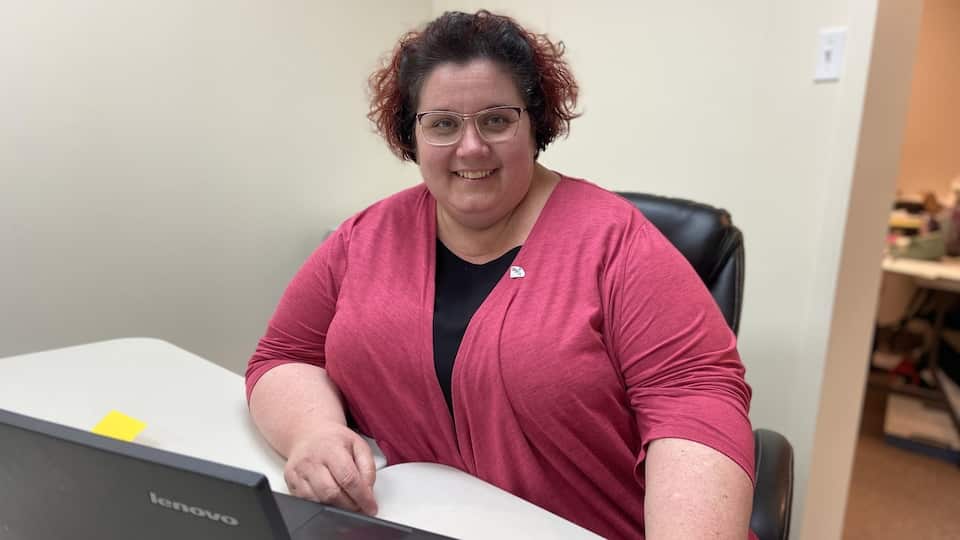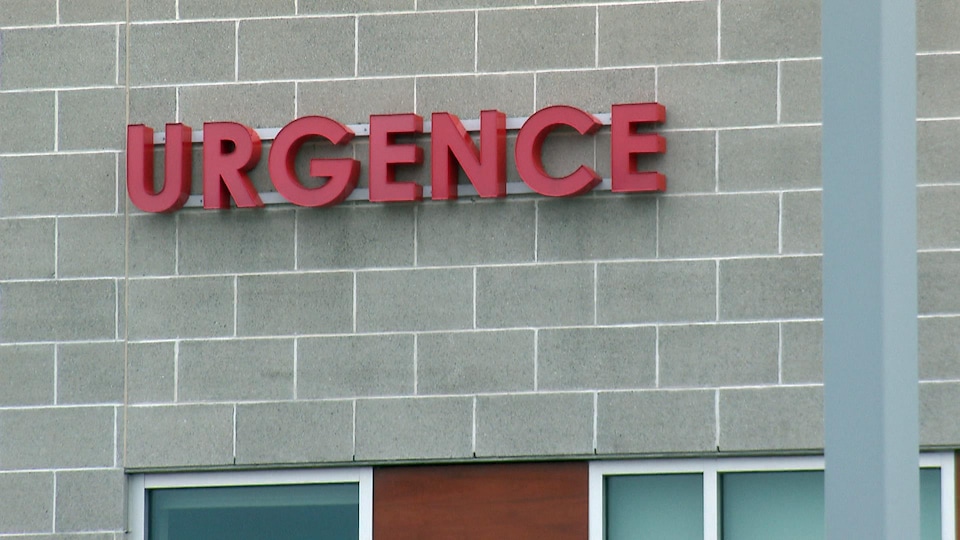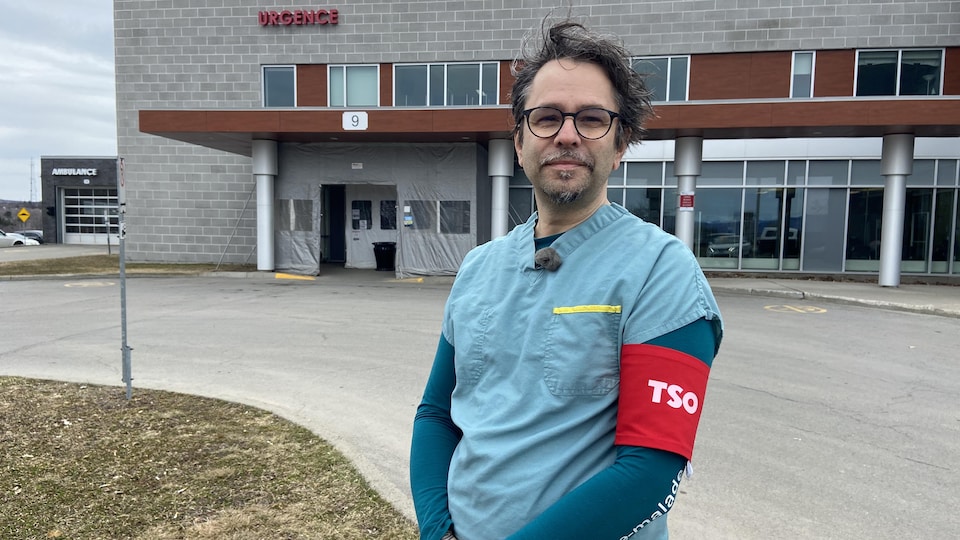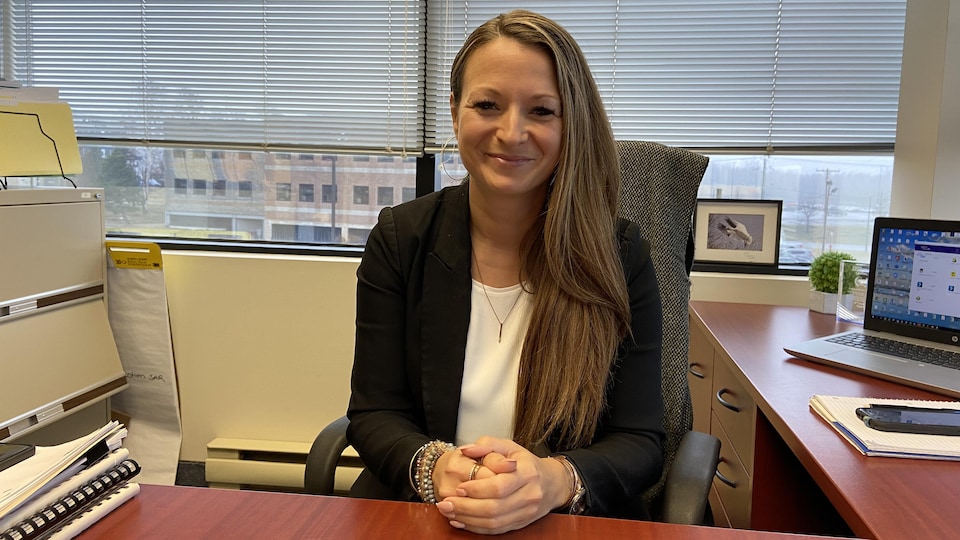During the 2021-2022 fiscal year, workers in the CISSS de Chaudière-Appalaches worked 20,347 compulsory overtime hours, compared to 11,591 in 2019-2020. This represents an increase of 76%.
During the same period, the use of TSO in the establishments of university hospital de Québec experienced a similar increase, going from 16,502 to 28,825 hours, an increase of 75%.
Lesser increase at CIUSSS
On the territory of CIUSSS in the Capitale-Nationale region, the number of compulsory overtime hours worked by employees has seen a more modest increase of 9% over the past two years.
The organization maintains that this increase reflects the increase in the number of employees CIUSSSwhich increased from 17,532 in 2019 to 22,307 in 2022.
The Minister of Health, Christian Dubé, has been repeating for several months his desire to put an end to the TSO, network workers say they have not seen any improvement on the ground. The situation has even worsened in places since the start of the sixth wave of COVID-19.
People don’t see the end. They have the impression that not everything is attempted to avoid it, eradicate it, TSO
confided in an interview to Radio-Canada, Patricia Pouliot, interim co-president and treasurer of the Union of Care Professionals of Chaudière-Appalaches (SPSCA).
She mentions that employees sometimes have to work up to three shifts a week in TSO. The union representative criticizes the government for not grasping the extent of the distress
experienced by nurses and other healthcare professionals who are forced to work overtime.
Disarray
Sometimes I have the impression that the employer, the government, does not know what is going on in the field. Tsé, it’s nice to be told: “we’re here then we think of our guardian angels, we’re here to protect them”, but they don’t really know what’s going on, that there’s a distress
laments Patricia Pouliot.
” It is [les employés] who experience it, this disarray, who tell the government that enough is enough, that they have had enough. »
The co-president of SPSCA mentions that the use of TSO is widespread in the territory of CISSS of Chaudière-Appalaches. The situation, she says, is particularly difficult
in emergencies, CHSLD and mother-child units as well as intensive care.
Louis Tremblay is a nurse at the Montmagny Hospital. With a high emergency room occupancy rate, which he estimated at 200% when Radio-Canada visited on Monday, the use of TSO is often unavoidable.
arm twist
An occupancy rate […] 200% means that there are twice as many patients. So, it’s clear that at 4 p.m., the manager will come out of her office and will start going around the nurses to tell them: “Okay, fine, we’ll need someone to help this evening because that there are too many people”, and she will start twisting her arms [pour savoir] who wants to stay
says Mr. Tremblay.
He mentions that after finishing an 8 am to 4 pm shift, a nurse may be required to work until midnight and be back at her post by 8 am the next morning.
That means that tomorrow afternoon, at 4 p.m., this girl will have worked 24 hours a day. That’s the reality of TSO
exposes Louis Tremblay, who equates compulsory overtime with institutional violence
and to one cancer
.
” There are girls who will start crying. It is always experienced as an aggression. It is always experienced as violence. »
If nothing changes, employees will have no choice but to change profession in order to preserve their health, warns the nurse.
It exerts pressure. The girls here, the nurses, will not be able to do 25 years of service to do three [quarts de] 16 hours per week. At some point, they will explode, they will choose another profession
he says.
Visibility Operation
In order to make the population and network users aware of the problem, Louis Tremblay has created an armband worn for a few days by employees forced to TSO. The armband is red and bears the inscription TSO
in white letters.
The purpose of the initiative is to inform patients and those around them that the girl who is triaging them in the emergency room, the girl who takes care of their mother in medical surgery, here, in 3rd floor, that the girl who takes care of their grandfather in CHSLDshe may be doing the 14th hour of her [quart de] 16 hours [qui est peut-être son] 3rd [quart de] 16 hours in a week
explains Mr. Tremblay.
The head of the replacement activities service at the CISSS from Chaudière-Appalaches, Joannie Gagné, ensures that everything is done to avoid resorting to compulsory overtime as much as possible.
1000 nursing positions to be filled
However, it specifies that due to the labor shortage, the use of the TSO is often unavoidable, especially among nurses. According to Ms. Gagné, there is a shortage of nearly 1,000 nurses in the establishments of the CISSS of Chaudière-Appalaches. This is without counting the absences of employees attributable to COVID-19.
Of course, the last year has been very trying. Even the last two years, with COVID, it’s been difficult. There are more employees who were removed because they were in administrative isolation [ou] because they were sick, but we also withdrew our pregnant workers. There were several things that caused us to remove several people from the environment
says the manager.
” No one is comfortable imposing a TSO to someone because[on arrive à] to put oneself in the shoes of the individual, of a mother or even of someone who has commitments and who learns that he is going to have to stay. There is nothing pleasant in that. »
She adds that efforts are being made to try to reduce the use of TSO, including the creation of a self-management pilot project at Hôpital de Montmagny which aims to improve work/life balance by involving employees in the design of schedules. The pilot project will be implemented by the fall.
There is like an exchange, a sharing that is done to come and fill all [les quarts] that there is to fill. So, it’s cards on the table: here are the personnel that it takes us on each shift. Now, you are given the opportunity to make your schedule according to what you want. If you have a leave to put in the schedule because you have an appointment, well come and indicate it as what it is not possible. Basically, that’s self-management
summarizes Joannie Gagné.
Reduced work force
Like the CISSS of Chaudière-Appalaches, the university hospital of Quebec-Laval University claims to have suffered a significant loss
of its workforce due to COVID-19, the main factor explaining the significant increase in the use of TSO.
Despite the significant collaboration of the teams, the modulation of activities and the many efforts made to limit the TSOthe university hospital had to deal with significantly reduced labor availability due to a large number of preventive withdrawals (pregnant women, immunosuppressed people, etc.) and employee absences for reasons related to the virus
says communications advisor Michèle Schaffner-Junius in an email to Radio-Canada.
She adds that the university hospital de Québec-Université Laval has multiplied its efforts to meet the needs in human resources and decrease as much as possible
pressure on employees. In particular, the establishment carried out a reorganization of care and conducted a vast recruitment campaign
in Quebec and internationally.
For his part, the CIUSSS de la Capitale-Nationale points out that the percentage of hours worked in TSO relative to the total number of hours worked has fallen slightly over the past two years, from 0.077% to 0.070%.
Despite the pandemic context which has put a lot of pressure on the network, there is a firm will at the CIUSSS of the Capitale-Nationale to reduce as much as possible the use of TSO
says Mathieu Boivin, media relations information officer.
Success in Charlevoix
Two of the hospitals placed under the responsibility of the CIUSSSthose of Baie-Saint-Paul and La Malbaie, adopted at the beginning of last summer a pilot project for the self-management of nurses’ schedules similar to the one being prepared at the Montmagny Hospital.
By considerably reducing the number of absences, compulsory overtime and unfilled shifts, the initiative made it possible to avoid the partial closure of the emergency room at the Baie-Saint-Paul Hospital, which was announced in mid-June.
Reference-ici.radio-canada.ca




